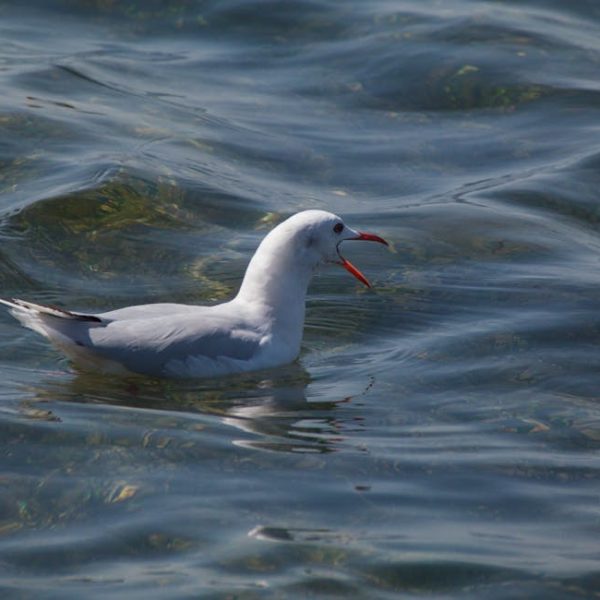Birds, just like any other creature, follow innate rules and instincts in their behavior. The intriguing habit they have of seemingly playing ‘chicken’ with moving vehicles can be attributed to several factors, primarily their perception of speed and distance, their survival instincts, and illusions of safety. In this article, we will closely examine each of these aspects, delve into the consequences of this behavior for both birds and motorists, and finally look at possible prevention and mitigating efforts.
The Birds’ Perception of Speed and Distance
Birds have a panoramic vision due to the split in their retina which humans do not possess, enabling them to see in two different directions at once. Interestingly, this different visual structure also influences their perception of speed and distance. For instance, a moving car might appear much farther and slower from their perspective which can lead to a false sense of safety. Factors that affect bird’s assessment of speed and distance include:
- Unusually sharp vision: Birds have the highest number of cones in their eyes among all animals, allowing them to discern objects even at high speeds.
- Predatory instincts: Bird’s instinct to quickly evade a potential predator could cause them to mistakenly fly into the path of vehicles.
Being aware of these factors could help drivers not just to understand but also reduce bird collisions. As a best practice, one should maintain a cautious speed, especially in bird-heavy areas, which gives birds ample time to analyze and steer clear of a moving vehicle.
The Role of Survival Instincts
Birds’ survival instincts can play a crucial role in their peculiar ‘daring’ flight patterns. Birds consider fast-moving objects like cars similar to attackers such as larger predatory birds. An agile, sweeping, last-minute flight can confuse a predator, enabling the bird to escape successfully. Unfortunately, this same strategy when utilised towards oncoming vehicles often leads to collisions.
Understanding the impact of different environmental factors can be useful in predicting these flight patterns. For instance:
- During breeding season, birds are more likely to act courageously due to the increased drive of protecting nests and offspring.
- Weather conditions such as fog or rain can disorient birds and affect their judgement, making collisions more likely.
Illusion of Safety
There’s also the possibility that roads and cars are misconstrued by birds as non-threatening environments due to their spaciousness, netting them with an illusion of safety. The timeline of these perception might go as follows:
- Birds identify the broad, open spaces of the road as safe zones, similar to fields and water bodies.
- However, as the car approaches, they’re startled and instinctively take off – leading to them flying in the same path as the car.
This insight can be instrumental for city planning. For instance, place tall trees or natural bird feeders along the pavements to create ‘no-fly zones’ limiting their flight to safer areas.
Consequences of Flying in Front of Cars
The consequences of birds flying in front of cars can be significant for both parties involved. Birds may suffer from injuries, many of which could be fatal. According to the American Bird Conservancy, up to one billion birds die each year due to collisions with human-made structures, and cars play a significant role in this.
On the other hand, for motorists, these incidents could lead to vehicle damage and, in more severe cases, cause accidents due to sudden, unexpected movements. The table below summarizes the potential consequences:
| Birds | Motorists |
|---|---|
| Injuries or death | Vehicle damage |
| Reduction in population | Potential road accidents |
In the unfortunate event that a bird is hit and injured by a car, keep a list of local wildlife rehabilitators or contact your local animal control for advice.
Prevention and Mitigation Efforts
There are multiple strategies at play to minimise the occurrence of this problem. These include:
- Car technology: Implementing features such as reflective materials on vehicles can help alert birds to potential danger.
- Infrastructure design: Designing roads to avoid bird-heavy areas, or building overpasses for birds to ensure their safety.
- Education: Running awareness programs to help drivers understand this issue and operate their vehicles accordingly.
Additionally, as a driver, being aware of bird population zones and adjusting your speed, especially during migration periods, can significantly reduce the chances of unintended bird collisions.
In conclusion, understanding why birds fly in front of cars is an intersection between biology, psychology, environmental design and driver behaviour. Finding ways to minimise these incidents will not only protect bird populations but also ensure safer roads for everyone.
Key Takeaway:
- Birds fly in front of cars due to a distinct perception of speed and distance, influenced by their unique visual capabilities and survival instincts.
- Birds often misinterpret roads and cars as safe, like other wide-open spaces, leading to sudden flights that coincide with the path of moving vehicles.
- These incidents can have substantial consequences for both the bird (potentially fatal injuries)/population reduction and the driver (damage to the vehicle or accidents).
- Strategies to reduce bird collisions include improved car technology, better infrastructure design, education awareness programs, and conscious driving behaviours.
Let’s remember that humans and wildlife share the environment. By understanding the reasons behind bird collisions and taking measures to prevent such incidents, we can contribute to safer habitats for birds and safer roads for us. Remember, a little awareness and caution go a long way in paving the path for co-existence!
FAQs
Q: How can I make my car less appealing to birds?
A: Using more reflective materials on your vehicle or incorporating ultrasonic whistles can help deter birds. However, being mindful of your driving, especially in areas populated by birds, is the most effective way to prevent bird collisions.
Q: Are certain species of birds more likely to fly in front of cars?
A: Certain species that have adaptive flight patterns for predator evasion, such as pigeons, might be more prone to flying in the path of vehicles. However, any bird could potentially fly in front of cars due to the reasons discussed.
Q: Can the time of day or weather condition influence the likelihood of bird collisions?
A: Yes, during twilight or low-light conditions (dawn or dusk) and in adverse weather like fog or rain, birds may be disoriented leading to increased chances of collisions.
Q: Apart from driving carefully, what else can I do to help reduce bird collisions?
A: Speak to local government bodies about implementing bird-friendly infrastructure design. You can participate in driver awareness programs and spread the word about the importance of careful driving in bird-populated areas.
Q: What should I do if I accidentally hit a bird with my car?
A: If a bird is injured, and it’s safe for you to do so, wrap it gently in a cloth and put it in a ventilated box. Contact a local wildlife rehabilitation center for further assistance.
If you found this article useful, why not share it with others and explore more posts on our website? Your small act can help create safer environments for our avian friends!












